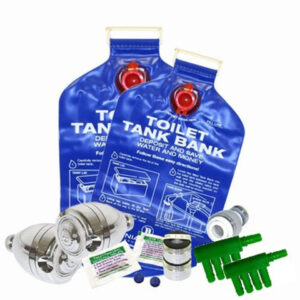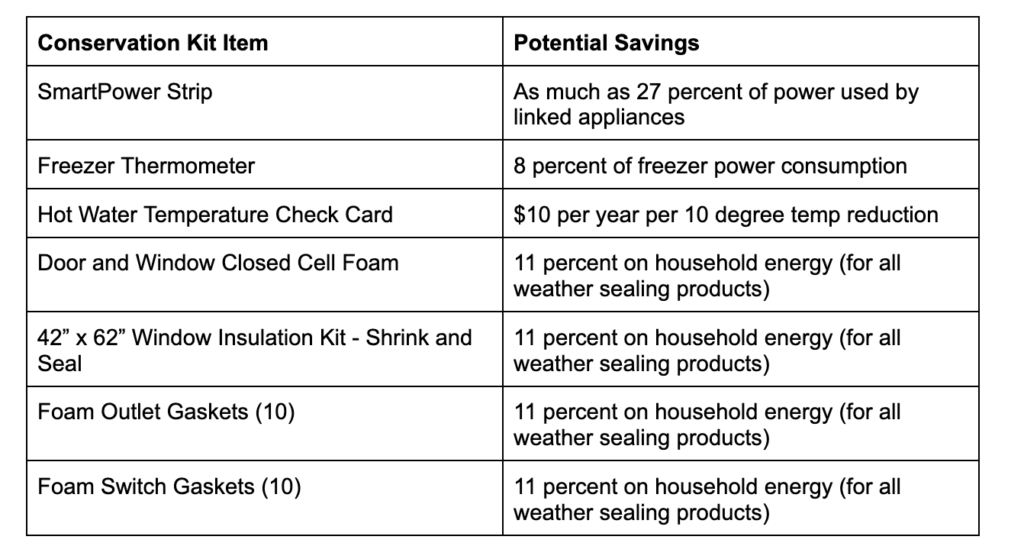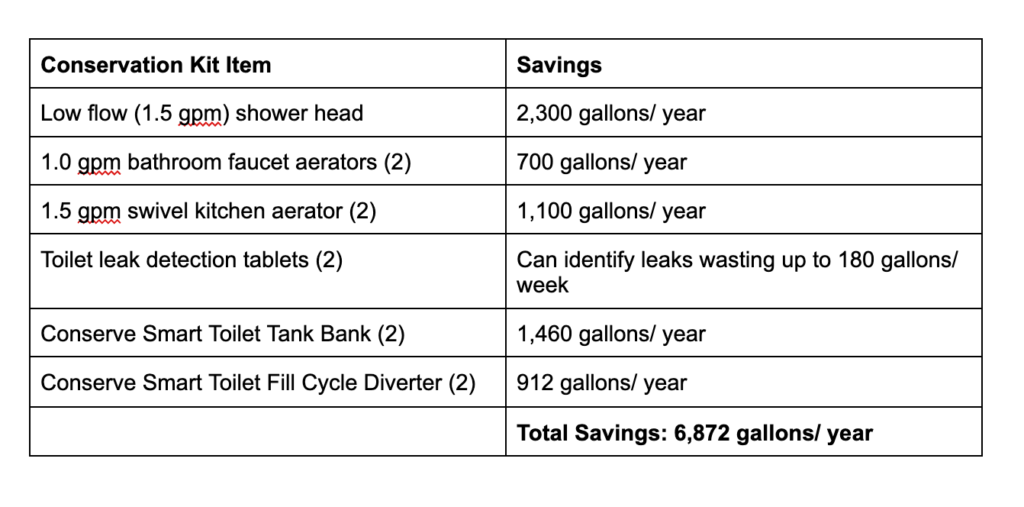 Energy conservation is more important today than ever, both for reducing household utility bills and for contributing to the sustainability of our energy system. To help residents cut costs and consumption, organizations of all kinds have begun to distribute energy conservation kits to help residents save at home.
Energy conservation is more important today than ever, both for reducing household utility bills and for contributing to the sustainability of our energy system. To help residents cut costs and consumption, organizations of all kinds have begun to distribute energy conservation kits to help residents save at home.
Whether provided by a local utility company or a nonprofit organization, a conservation kit or energy savings kit is almost always a welcome gift. But how much energy do they actually save? Are they just for show, or do they provide real benefits?
Real Savings
As it turns out, the items contained in a typical conservation kit can make a real impact on a household’s energy use. From simple upgrades like low-flow showerheads to more high tech solutions like smart power strips, homeowners armed with a conservation kit can make a real dent in their use.
To speak with a ConservationMart.com expert about assembling a high quality conservation kit, call now at 800-789-8598.
In this article, we’ll break down some of the items most commonly contained in a conservation kit, and let you know approximately how much each item could save. We’ll also explore the significance of conservation kit programs, why utility companies advocate for energy savings, and let you know where to get help assembling a top-notch conservation or energy savings kit.
Low-Flow Shower Heads
A low-flow showerhead is one of the most effective ways to cut water use, and it’s also one of the items we recommend be included in every conservation kit.
These devices reduce water flow to about 1.5 gallons per minute (gpm), compared to the standard 2.5 gpm. This can save an average household up to 2,300 gallons of water per year and lower annual utility bills by $145.
Faucet Aerators
Faucet aerators are also a great way to cut down on water and energy use. They work by introducing air into the water stream, controlling the flow of water while maintaining pressure.
Installing aerators on bathroom and kitchen faucets can save up to 30% on water consumption, reducing both water and energy costs. Both of these tools have been engineered to maintain water pressure, so while users will consume less water, they won’t have to suffer through a weak shower.
Weather Stripping for Doors and Windows
Weather stripping seals gaps around doors and windows, preventing drafts that can account for up to 30% of a home’s heating and cooling energy loss. By installing weather stripping, you can save between 10% and 15% on your energy bills annually. This is particularly effective in older homes that may have significant air leaks around doors and windows.
Sealant for Doors and Windows
Caulking or sealing cracks around windows and doors complements weather stripping, and creates another barrier to the outdoors. By preventing air infiltration, sealants help ensure that your heating and cooling systems work more efficiently. Sealing your home can reduce energy bills by up to 20%. It’s an inexpensive way to immediately improve home comfort and energy efficiency.
New Toilet Flappers
A faulty toilet flapper can result in leaks that waste hundreds of gallons of water each day. Replacing a worn-out flapper is inexpensive and can save up to 200 gallons of water per day.
This simple fix can drastically reduce water usage and lower your water bill, and makes a great addition to any conservation kit. Homeowners can even further increase water savings in toilets by using an adjustable low flow toilet flapper.
To speak with a ConservationMart.com expert about assembling a high quality conservation kit, call now at 800-789-8598.
Hose Nozzle
Using a hose nozzle allows you to control water flow, saving as much as 40 gallons of water per use compared to a hose left running continuously. This simple tool can prevent water waste when washing cars, watering plants, or cleaning outdoor areas. We find that hose nozzles are among the most popular additions to a conservation kit.
Smart Power Strips
Many electronics continue to draw electricity even when turned off, a phenomenon known as “phantom” or “vampire” energy. Smart power strips cut off power to devices when they are not in use, potentially saving a household up to $200 per year in electricity, and they take no time to install.
Toilet Savers
Toilet savers, such as tank bags or adjustable flappers, are easily installed, and can save water by reducing the amount of water used per flush. Reducing toilet water use with a tank bank can save up to 1,460 gallons of water per year. These are a great addition to any energy saving kits.
Smart Thermostats
Smart thermostats offer one of the most significant potential energy savings. By automatically adjusting the temperature based on your schedule, a smart thermostat can reduce heating and cooling bills by 8% annually. Households could save money — up to hundreds of dollars per year — simply by optimizing temperature control.
LED Bulbs and Night Lights
Switching to LED bulbs is one of the easiest ways to save. LEDs use up to 90% less energy than traditional incandescent bulbs and last 15 times longer, saving around $40 annually per household. LEDs also reduce replacement costs, making them a great long-term investment.
Indoor Digital Thermometers
An indoor digital thermometer has a sensor that helps monitor indoor temperatures, allowing you to adjust your heating or cooling systems efficiently. Keeping temperatures within optimal ranges can prevent unnecessary energy consumption.
Added Insulation
Proper insulation is crucial for maintaining home temperature and reducing energy bills. By insulating attics, walls, and floors, homeowners can save up to 20% on heating and cooling. Insulation helps to keep heat in during winter and out during summer, reducing the strain on HVAC systems. Spray foam insulation especially is the most efficient insulation product on the market.
So How Much Can a Conservation Kit Save?
We discussed above what some elements of typical energy efficiency kits could save an average household. Now let’s look at some of the most popular kits we sell here at conservationmart.com and get some rough estimates of what they might do for a typical home.
Energy Conservation Kit Savings
Our Deluxe Conservation Kit with Advanced Power Strip comes with all of the items listed below. While there are too many variables to assemble a reliable total, each of these small items can make a significant difference.
See the chart below for information on each item:

Water Conservation Kit Savings
Our Deluxe Water Conservation Kit for Two Bathrooms is one of our most popular kits, filled with items we find customers strongly value. Look at the chart below to see.

Where Can You Get a Conservation Kit?
Many utility companies and government programs offer free or discounted energy conservation kits to encourage energy savings. These kits can often be requested online or picked up from local government offices or utility providers.
Why Utility Companies Want People to Save Energy
Although it might seem counterintuitive, utility companies have a vested interest in promoting energy conservation. Many utility companies offer incentives and rebates for energy-efficient upgrades because reducing overall energy demand can help them avoid building costly new power plants and upgrading infrastructure. Additionally, promoting energy efficiency helps utilities meet government-mandated efficiency standards and sustainability goals.
Conservation Kits: Real Value
Energy and water efficiency upgrades are simple, cost-effective ways for homeowners to save money and reduce their environmental impact. Whether through low-flow showerheads, smart thermostats, or added insulation, these measures collectively contribute to a more sustainable and energy-efficient future.
To speak with a conservationmart.com expert about assembling a high quality conservation kit, call 800-789-8598.
